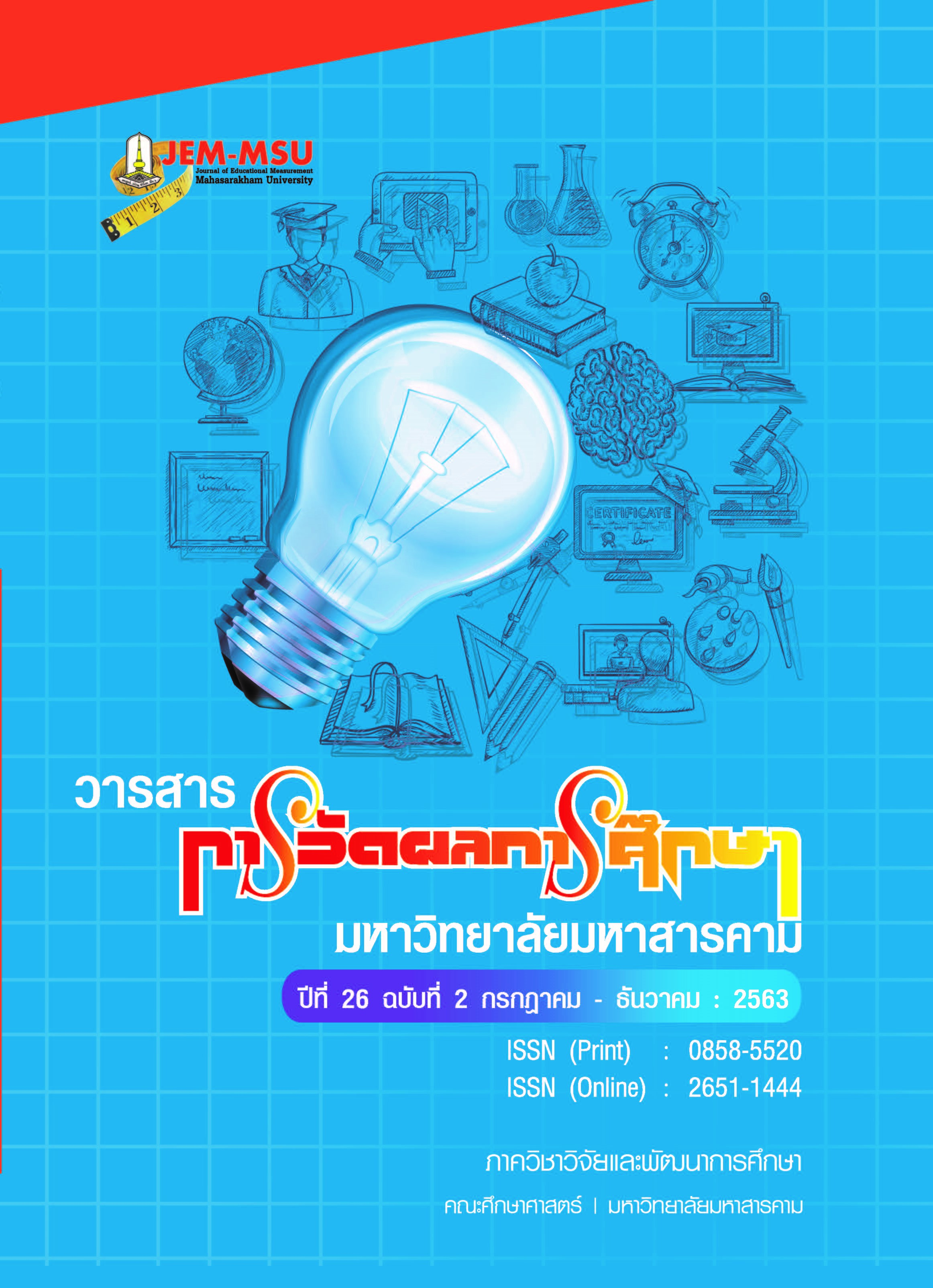Problem Solving for Grade 3 Students’ Reading Disabilities Using Multimedia
Main Article Content
Abstract
This research aimed to study the effect of using multimedia to develop reading ability of students with learning disabilities in reading, before and after using the multimedia. The target group comprised 3 grade 3 students with learning disabilities in reading and word spelling in Choomchonwangplapomwittayasuksa School. The reading and spelling ability of the students was at the grade 1 level. The tools used in this study consisted of individual implementation plans (IIP), multimedia, reading tests, and a learning behavior assessment form. The statistics employed in data analysis were percentage and descriptive analysis.
The findings were as follows:
1. The grade 3 students with learning disabilities in reading who had learned with the multimedia had the learning behavior at a moderate level;
2. The grade 3 students with learning disabilities in reading who had learned with the multimedia had the post-learning ability of reading Thai words higher than the pre-learning ability at 60 percent and higher.
Article Details
The content and information contained in the published article in the Journal of Educational Measurement Mahasarakham University represent the opinions and responsibilities of the authors directly. The editorial board of the journal is not necessarily in agreement with or responsible for any of the content.
The articles, data, content, images, etc. that have been published in the Journal of Educational Measurement Mahasarakham University are copyrighted by the journal. If any individual or organization wishes to reproduce or perform any actions involving the entirety or any part of the content, they must obtain written permission from the Journal of Educational Measurement Mahasarakham University.
References
กุลยา ก่อสุวรรณ. (2553). ภาวะบกพร่องทางสติปัญญา. กรุงเทพฯ : มหาวิทยาลัยศรีนครินทรวิโรฒ.
เกษมณี เมตตามนุษย์. (2557). การศึกษาความสามารถด้านการอ่านคำภาษาไทย ของนักเรียนที่มีความบกพร่องทางการเรียนรู้ ชั้นประถมศึกษาปีที่ 2. มหาสารคาม : มหาวิทยาลัยมหาสารคาม.
ดารณี อุทัยรัตนกิจ และชาญวิทย์ พรนภดล. (2549). คู่มือการใช้แบบคัดกรอง. กรุงเทพฯ : มหาวิทยาลัยเกษตรศาสตร์.
นงลักษณ์ เหมาะดี. (2554). การอ่านคำพื้นฐานภาษาไทยของนักเรียนชั้นประถมศึกษาปีที่ 3 ที่มีความบกพร่องทางการเรียนรู้ ด้วยวิธีการใช้บัตรภาพ. ขอนแก่น : มหาวิทยาลัยขอนแก่น.
ผดุง อารยะวิญญู. (2533). การศึกษาสำหรับเด็กที่มีความต้องการพิเศษ. กรุงเทพฯ : บรรณกิจเทรดดิ้ง.
ภูฟ้า เสวกพนธ์. (2555). การจัดการศึกษาแบบเรียนร่วม ทฤษฏีและแนวปฏิบัติ. กรุงเทพฯ : จุฬาลงกรณ์มหาวิทยาลัย.
วาระดี ชาญวิรัตน์. (2547). เอกสารประกอบการสอน รายวิชาเทคนิคการสอนเด็กที่มีความต้องการพิเศษ. นครราชสีมา : มหาวิทยาลัยราชภัฎนครราชสีมา.
ศศิธร ชาลีพรหม. (2552). การให้ความช่วยเหลือทางการศึกษานักเรียนที่มีภาวะสมาธิสั้น และบกพร่องทางการเรียนรู้ : กรณีศึกษาโรงเรียนซอยแอนเนกซ์ (กาญจณาภิเษก 2). กรุงเทพฯ : โรงเรียนซอยแอนเนกซ์ (กาญจณาภิเษก 2).
ศรียา นิยมธรรม. (2541). ปัญหายุ่งยากทางการเรียนรู้. พิมพ์ครั้งที่ 3. กรุงเทพฯ : พรานนกการพิมพ์.
สำนักงานส่งเสริมการศึกษานอกระบบและการศึกษาตามอัธยาศัย. (2551). สร้างด้วยใจเพื่อเด็กแอลดี. กรุงเทพฯ : ส่วนส่งเสริมการผลิตสื่อการศึกษาเพื่อคนพิการ ศูนย์เทคโนโลยีทางการศึกษา.
สำนักบริหารงานการศึกษาพิเศษ. (2554). ความรู้พื้นฐานและแนวทางพัฒนานักเรียนที่มีความบกพร่องทางการเรียนรู้. กรุงเทพฯ : สำนักงานคณะกรรมการการศึกษาขั้นพื้นฐาน.
สุนันทา มั่นเศรษฐวิทย์. (2543). หลักและวิธีการสอนอ่านภาษาไทย. กรุงเทพฯ : ไทยวัฒนาพานิช.
Mary, Ellen Drecktran and Chiang Berttram. (1997). “Instructional Strategies Used by General Educators and Teachers’ of Students with Learning Disability,” Remedial and Specia Education, 18, 174-181.


